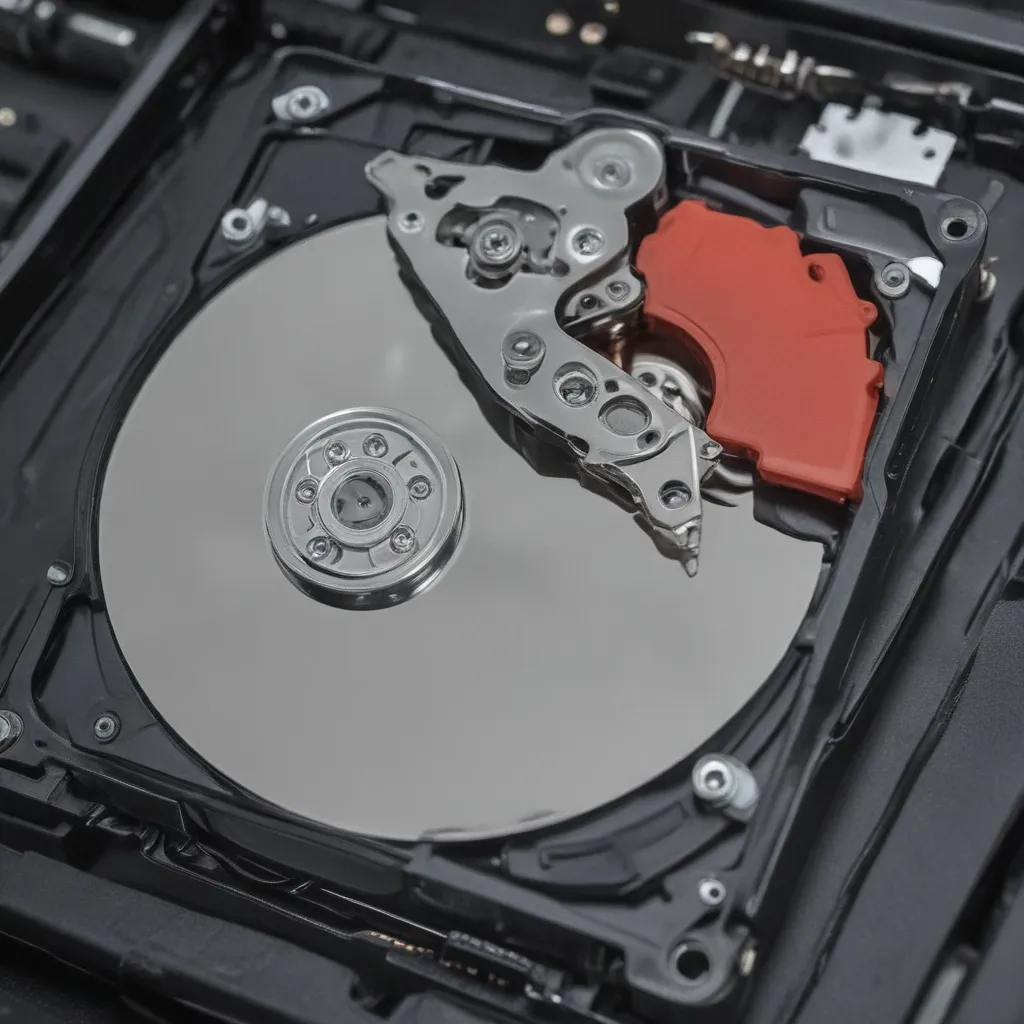Outwit the Grim Reaper of Data
You’ve been there – that sinking feeling when you accidentally delete an important file or your hard drive decides to take an unexpected dirt nap. It’s enough to make you want to curl up in the fetal position and start rocking back and forth. But fear not, my data-desperate friend, for I come bearing the secrets of file resurrection!
Let’s start with the most common culprit – good old human error. We’ve all been there, mindlessly clicking away, only to suddenly realize we’ve just sent our life’s work to the digital graveyard. But take heart, for the Recycle Bin (or Trash on a Mac) is often the first stop on the road to recovery [1]. Simply dig through that digital dumpster, find your lost treasure, and restore it to its rightful place. Easy peasy, right?
But what if the Recycle Bin has been emptied, leaving you staring at a barren wasteland of despair? Fear not, for modern operating systems have equipped us with an array of file-saving magic tricks. On Windows, you can try the “File History” feature, which keeps tabs on your document changes over time [1]. With a few clicks, you can rewind the clock and resurrect that elusive file. And on Mac, the “Time Machine” backup system is there to save the day, allowing you to restore individual files or your entire system from a previous backup [5].
When the Digital Grim Reaper Strikes
But what if the problem extends beyond simple human error? What if your hard drive has taken a nosedive, leaving you with a spinning wheel of doom and a growing collection of grey hairs? Well, my friend, that’s when the real adventure begins.
First things first, resist the urge to panic and start frantically clicking around. The worst thing you can do is start overwriting potentially recoverable data [7]. Instead, take a deep breath, and let’s assess the situation.
If your hard drive is still functional, albeit ailing, you might be able to coax it back to life with some good old-fashioned command line magic. On Windows, the “Windows File Recovery” tool can scour your drive for remnants of your lost files, piecing them back together like a digital jigsaw puzzle [1]. And on Mac, the Terminal offers a similar lifeline, allowing you to rummage through the Trash and resurrect your deleted darlings [5].
But sometimes, the digital grim reaper is just too powerful, and your hard drive is beyond the reach of mere mortal tools. That’s when it’s time to call in the big guns – professional data recovery services. These wizards of the data world can use specialized tools and techniques to extract your files from the very brink of oblivion, often achieving miracles that would make a magician blush [8].
Backup, Backup, Backup (and Encrypt)
Of course, the best way to avoid the heartbreak of data loss is to be proactive. That’s where backup strategies come into play, and let me tell you, they’re the digital equivalent of having a trusty parachute strapped to your back.
Imagine this: you’re happily typing away, lost in the creative flow, when suddenly, a bolt of lightning strikes your computer, and your hard drive goes the way of the dinosaur. But thanks to your trusty backup, you simply shrug, grab a fresh machine, and restore your files like a boss. No tears, no tantrums, just smooth sailing.
And the beauty of modern backup solutions is that they make this process practically effortless. Tools like Acronis Cyber Protect Home Office [8] can automate the entire process, constantly keeping your data safe in the cloud and on local storage. Plus, with features like military-grade encryption, you can rest assured that your files are as secure as a bank vault [8].
So, the next time the digital grim reaper comes knocking, don’t let him catch you with your pants down. Embrace the power of backup, and let your files sleep soundly, knowing they’re protected from the ravages of hard drive failure, accidental deletion, and the mischievous antics of hackers.
Conclusion: Slay the Data Dragon with Confidence
Data loss may be an unavoidable part of the digital landscape, but with the right tools and strategies, you can emerge victorious. Whether you’re battling the perils of human error or facing the wrath of a failing hard drive, the keys to triumph lie in a combination of quick thinking, resourceful tools, and a well-crafted backup plan.
So, the next time you find yourself staring down the barrel of data disaster, take a deep breath, channel your inner data warrior, and let the file restoration begin. With a little luck and a whole lot of digital dexterity, you’ll be reunited with your lost files before you can say “Abracadabra, my data is back!”
References:
[1] Knowledge from https://support.google.com/drive/thread/245055606/google-drive-files-suddenly-disappeared-the-drive-literally-went-back-to-condition-in-may-2023?hl=en
[2] Knowledge from https://askubuntu.com/questions/3883/how-to-recover-deleted-files
[3] Knowledge from https://forums.autodesk.com/t5/autocad-r12-r13-r14-archive-read/recovering-deleted-files/td-p/2914842
[4] Knowledge from https://www.googlecloudcommunity.com/gc/Workspace-Q-A/Recover-deleted-drive-document-not-in-trash-from-url/m-p/528479
[5] Knowledge from https://www.dropboxforum.com/t5/Delete-edit-and-organize/Deleted-files-due-to-external-drive-getting-disconnected/td-p/665220
[6] Knowledge from https://stackoverflow.com/questions/41265844/restore-a-deleted-file-in-the-visual-studio-code-recycle-bin
[7] Knowledge from https://answers.microsoft.com/en-us/windows/forum/all/automatic-scan-and-fix-of-hard-drive-seems-to-have/5089958c-d167-426c-b285-710941c67b7a
[8] Knowledge from https://www.acronis.com/en-eu/blog/posts/undelete/













